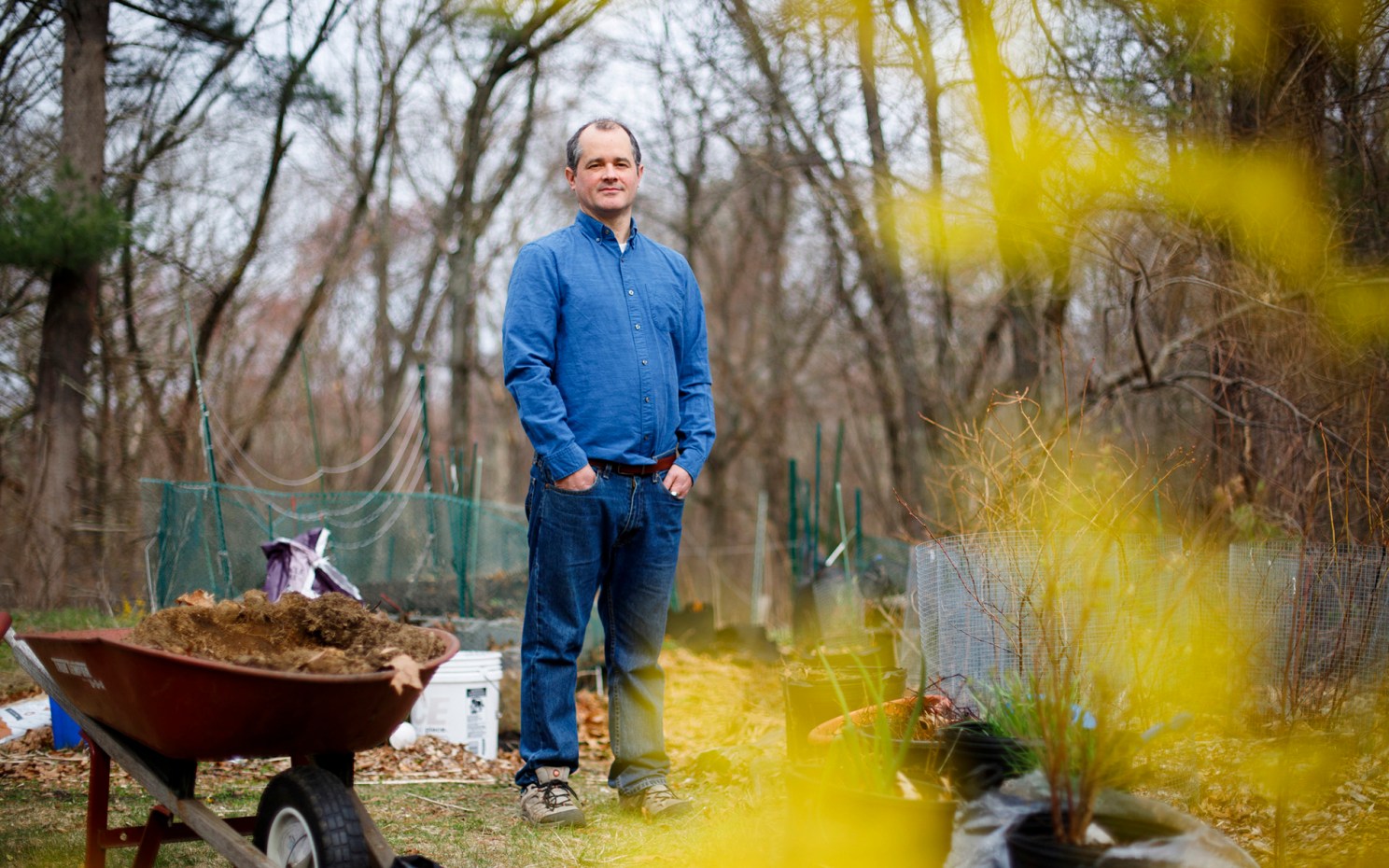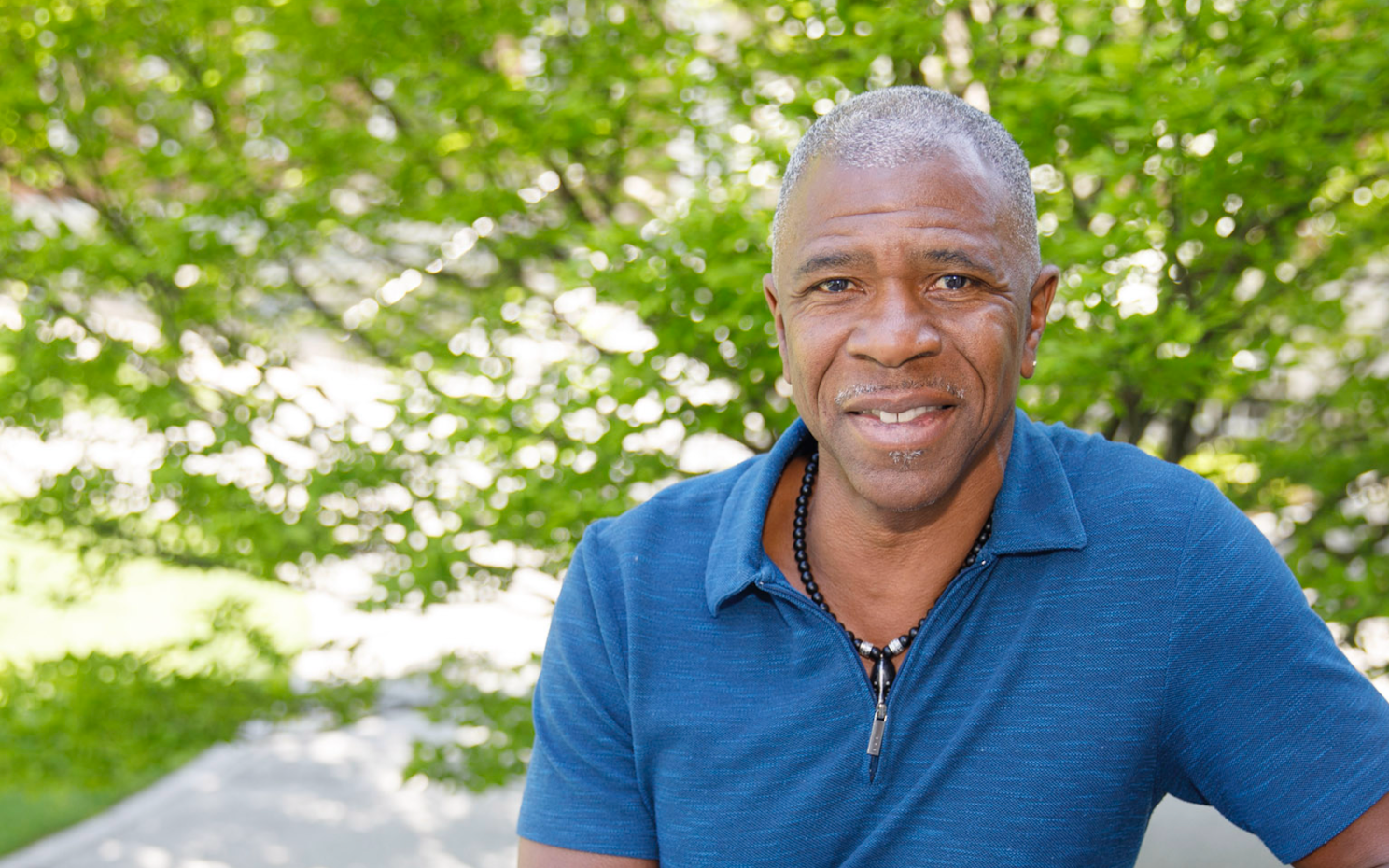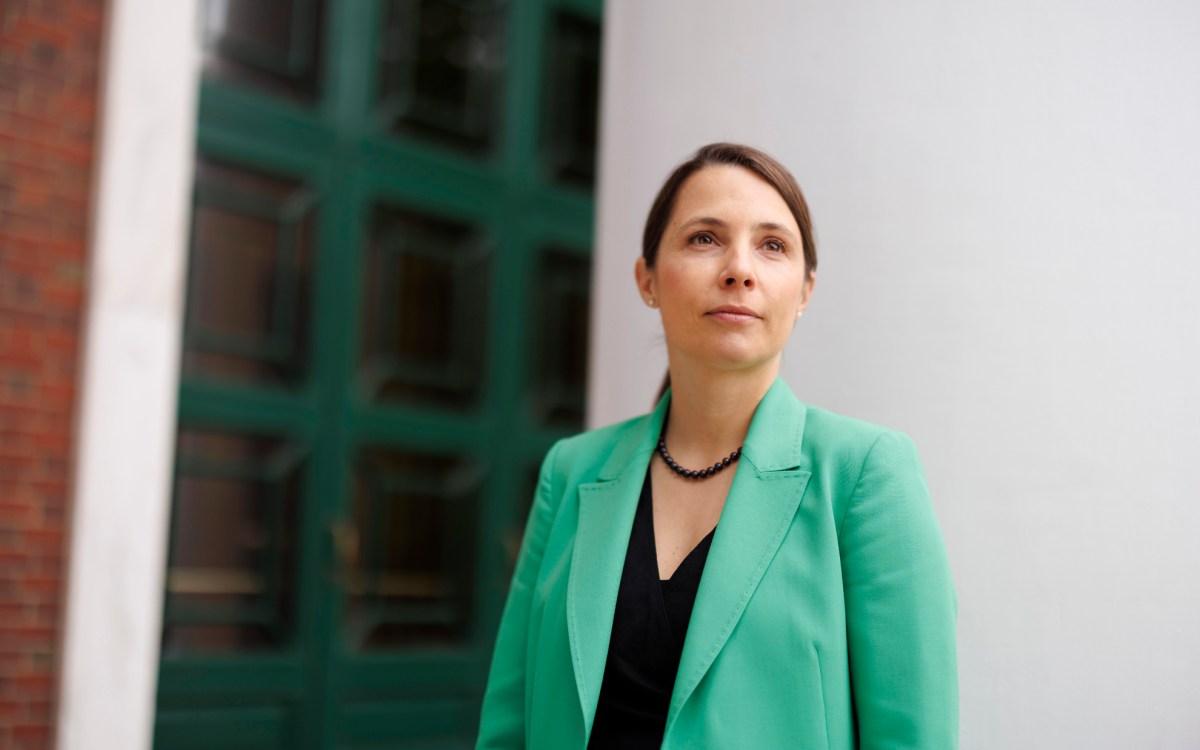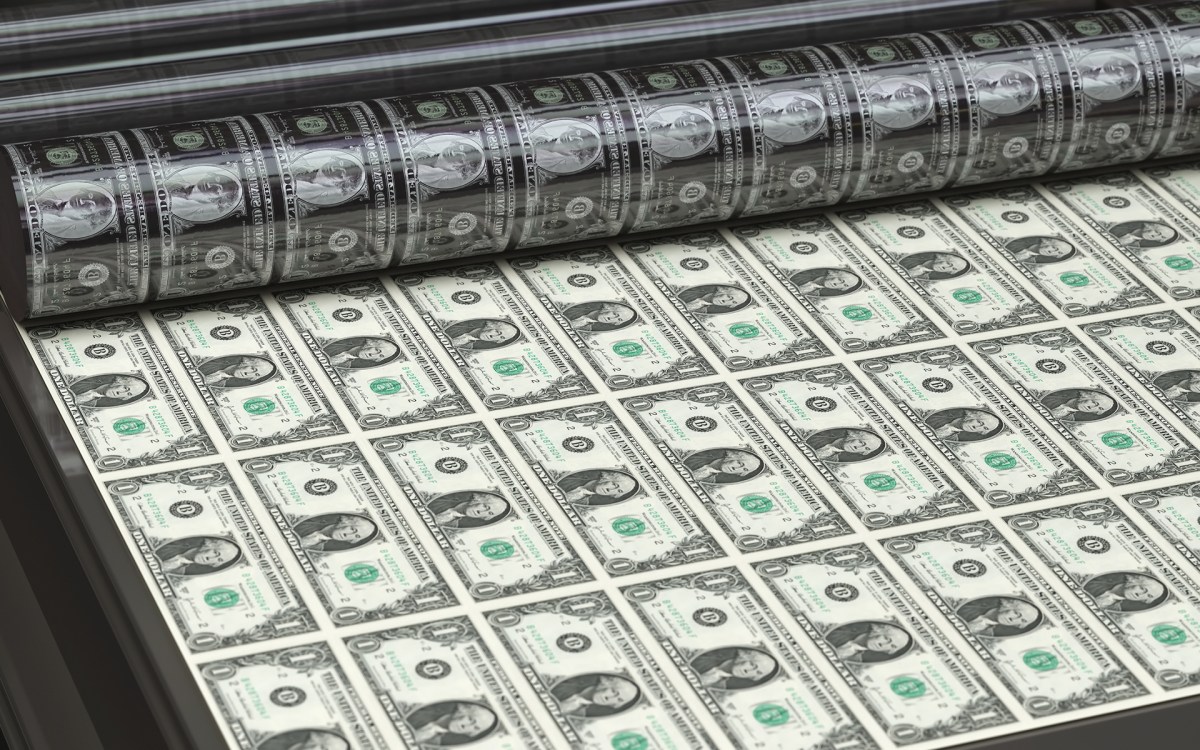James Riley’s indelible past
Graffiti of his Los Angeles youth — ‘You could experiment; there was no orthodoxy’ — colors the work of Business School scholar
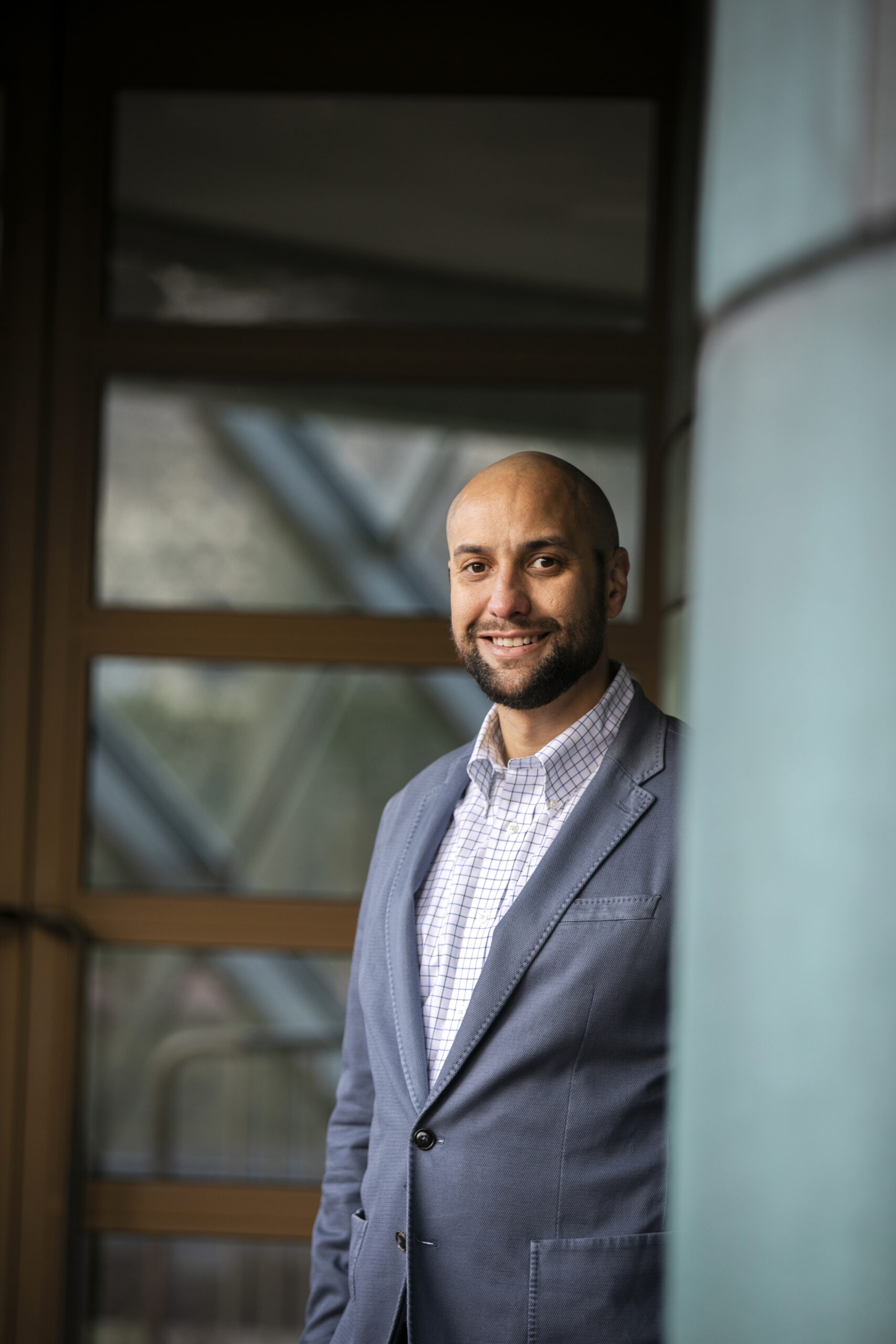
Harvard Business School Assistant Professor James Riley is an economic sociologist who studies contemporary art markets and other creative industries. His interest in and time spent as a teen graffiti artist in LA has informed his work today. He is pictured at Harvard Business School at Harvard University. Stephanie Mitchell/Harvard Staff Photographer
Stephanie Mitchell/Harvard Staff Photographer
James W. Riley has been confronted with questions of identity and alienation since he was a teenage graffiti artist navigating 1990s Los Angeles.
“I’ve always had this notion of going places and being in spaces that maybe subtly said, ‘You don’t belong here,’” said Riley, now an economic sociologist at Harvard Business School.
His parents were an interracial couple who fell in love in the 1960s, when mixed marriages faced scorn and sometimes worse in many parts of the U.S. Even so, he said, they always believed in the promise and potential of the American dream and the core principles — equality, freedom, and democracy — that define it.
“My parents instilled in me, ‘You’re free and you can be what you want to be … and never let anyone tell you any different,’” he said. “That really helped me bring what ended up being an ethos from my home and hip-hop and graffiti into the spaces and places I pursued. It’s really the ethos that I’ve carried with me from when I was 13 to right now.”
Janice Joan Dingfelder Riley, a white Midwesterner raised on a dairy farm, and Roy Whitcomb Riley, a Black Southerner, settled in Los Angeles shortly before their son’s birth, in 1981, after traveling the world for 18 years. They lived in Mid City, whose economic and racial diversity and central location provided easy access to a wide range of experiences and institutions, including the Los Angeles County Museum of Art, MOCA, and Barnsdale Art Park.
“You were exposed to the best of everything the city had to offer, for better or worse,” Riley said.

James Riley at age 16 in Los Angeles. Tags from his graffiti crew — KOG (Killer of Giants — “we were Davids against the odds,” said Riley) and LTS (Last to Survive) are visible on the wall.
Image courtesy of James W. Riley
A fan of Wu-Tang Clan, Tupac, Outkast, Nas, and other trailblazers of 1990s rap, Riley was naturally drawn to graffiti because of its significance in hip-hop culture and for how it helped him find his voice.
“Being neurodivergent and having learning differences, creative outlets like drawing were always a way for me to express myself when finding the words was more difficult,” he said.
Graffiti was also a form of escape. In the 1980s and ’90s, gang violence and drugs were rampant in Los Angeles. For young people seeking a different path, graffiti crews offered an identity that was of the streets but not confined by them.
“There was an element of safety — of protection and a pass — because, ‘Now we can account for who you are, what you’re about, and how you plug into this ecosystem we have happening,’” Riley said. “It let you fit in without having to give your life over to a neighborhood.”
Even rival artists admired Riley’s crew for pushing limits creatively and for pulling off technically difficult, sometimes dangerous, installations around the city. Their elaborate, thin-stroked graffiti incorporated German-, Gothic-, and Old English-style lettering, and was influenced by the Czech graphic artist and painter Alphonse Mucha, recalled Jason Williams, whose tagging name is REVOK.
Riley and a team of artists painted murals in Philadelphia and other cities around the country in 2013 and 2014.
Videos courtesy of “Arrive Strive Thrive” via James W. Riley and ARBE x FISH x VERSUS
“James would often have an outrageous means of approaching the situation that didn’t immediately seem obvious and sometimes you thought was a little bit crazy,” said Williams, now a Detroit-based painter. “But based on past experiences with him and this earned respect, you trusted him.” Riley’s crew, he said, “had this incredible energy and charisma and was doing things that were really inspirational. It started by changing the whole course of LA graffiti, but ultimately, led to really changing the way graffiti is painted to this day all over the world.”
Today, graffiti attracts deep-pocketed collectors. Back then, the art world rejected it. Other than the police, “Nobody cared about what we were doing in substance, content, and creativity,” said Riley. That lack of interest and the “shroud of illegality” surrounding his work sometimes left him dispirited, but it was also liberating, creatively and personally.
“It puts you in a shadow place, but it’s in that darkness that you can actually develop and evolve,” he said. “You could experiment; there was no orthodoxy.” These moments — the creative rush and his immersion in the work — were not just thrilling but also empowering. “The expression and the escape were in the doing,” Riley said. And the risks brought “a sense of accomplishment or gratification of having done something against the odds, this David-and-Goliath-like hero journey you created for yourself.”
But he was still very much a David. Art school, never mind a career in art, seemed like something other people did.
“There were no on-ramps that were clear to us,” he said. “We had this charismatic appeal, this raw authenticity, but we didn’t have the cultural or social capital to access those worlds and people weren’t exactly excited about opening the doors for us, for fear of whatever.”
Riley, who had grown up watching his father work 12-hour shifts as maître d’ at the Beverly Hills Hotel’s Polo Lounge, felt obligated to work just as hard and to be pragmatic in his goals. (“How are you going to support yourself? How are you going to support other people?”) That meant higher education — first at community college, then at the University of Southern California and eventually as a Ph.D. student at MIT’s Sloan School of Management. But it didn’t mean abandoning lessons about identity and value he remembers from his formative years in Los Angeles.
As an assistant professor of business administration, Riley studies the fine art market and innovation-driven organizations to decipher how social interactions and dynamics, which undergird all markets and organizations, affect the way people make economic decisions and take actions that have an economic effect.
“There are different definitions, different processes of creating or constructing value,” he said. “They’re not self-evident and they’re not objective, at first. So how do we reach this point at which people come to agree that this is, indeed, the value of this thing?”
When he thinks about the answer, his experience as a young graffiti artist gives him an edge.
“I think it makes me look in corners and places that maybe others would overlook,” said Riley, who in January launched blackbox Lab as an initiative of Harvard’s Digital, Data and Design Institute to create and support opportunities for Black entrepreneurs. “The pattern recognition that stems from my learning differences and unique perspective does help with surfacing unknown unknowns.”
As for the art world’s embrace of the craft that shaped his life, he’s grateful but not content.
“Graffiti art isn’t the only art that’s been marginalized, and it isn’t the only art that’s really powerful and important,” he said. “It’s an intergenerational project to start recognizing that everyone has something to bring to the table, so long as we start to see the value in what they’re bringing.
“It’s really about reconciliation and that’s going to take seeing and admitting that everyone has contributed, and everyone can contribute.”



